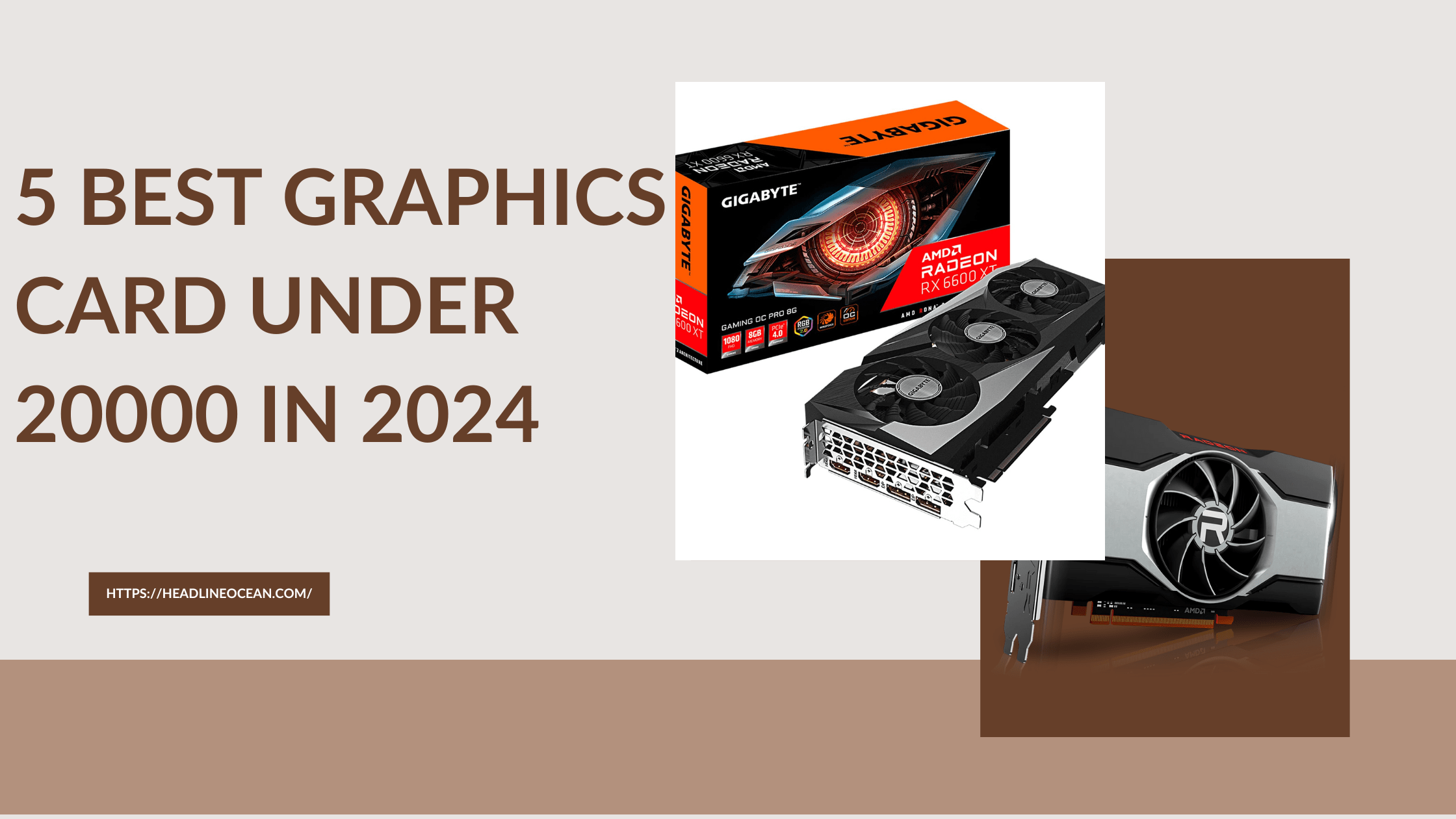Struggling to pick the best graphics card for your money? Look no further! This post defines the 5 best graphics card under 20000 in 2024, including specs, benefits, and downsides, to help you make an informed purchase. Discover the best solution for your 1080p gaming demands, including AMD’s RX 6600, NVIDIA’s GTX 1650, and Intel’s Arc A380. Upgrade the performance of your PC without breaking the budget—read now!
Here are the best graphics card under 20000:
1. AMD Radeon RX 6600:
This powerful AMD product provides excellent 1080p gaming performance and can run 1440p video games at reasonable settings. With capabilities like ray tracing and FidelityFX Super Resolution (FSR) for upscaling, the RX 6600 provides excellent value.
Specs:
- AMD RDNA 2 Architecture
- 32 Computing Units (CUs)
- 8 GB GDDR6 memory
- Boost clock to 2688 MHz.
Pros:
- Excellent 1080p gaming performance.
- Handles certain 1440p titles at good settings.
- supports ray tracing and FidelityFX Super Resolution (FSR).
- Great value for the price.
Cons:
- Not suitable for high refresh rates in 1440p gaming.
- Ray tracing performance is limited when compared to higher-end GPUs.
2. NVIDIA GeForce GTX 1650:
The GTX 1650, a long-time favorite, is still an excellent pick for 1080p gaming on esports titles and older AAA games. It is well-known for its power efficiency and low cost, making it an excellent choice for designing a balanced budget PC.
Specs:
- NVIDIA Turing Architecture
- 896 CUDA Cores
- 4 GB GDDR6 memory
- Boost Speed up to 1665 MHz.
Pros:
- Higher power efficiency for a dedicated GPU.
- An affordable alternative for 1080p gaming.
- Excellent pick for esports and older AAA games.
- The compact size fits comfortably in most cases.
Cons:
- For demanding titles, gaming resolution is limited to 1080p.
- Lacks modern features like DLSS and ray tracing.
3. Intel Arc A380:
The Arc A380 is a promising alternative to AMD and NVIDIA’s GPUs. It delivers remarkable performance in some games, notably those that make use of Intel’s XeSS upscaling technology.
Specs:
- Intel Xe HPG Architecture
- 8 Xe cores
- 6 GB GDDR6 memory
- Boost speed up to 2450 MHz.
Pros:
- XeSS upscaling enhances competitive performance in certain games.
- An attractive choice for those seeking an alternative to AMD/NVIDIA.
- Potential for improved driver optimization in the future
Cons:
- In comparison to AMD/NVIDIA, the platform is newer and has a less proven track record.
- Performance might vary based on the game and optimization.
- Limited availability in some locations.
4. NVIDIA GeForce GTX 1660 Super:
Although not as widely accessible as newer versions, the GTX 1660 Super is still a great option if found at a reasonable price. It provides smooth 1080p gaming at high settings and can even support some VR experiences.
Specs:
- NVIDIA’s Turing architecture
- 1408 CUDA cores.
- 6GB of GDDR6 RAM.
- Boost clock to 1815 MHz
Pros:
- Smooth 1080p gaming with high settings.
- Handles some virtual reality experiences
- More powerful than the GTX 1650
- If available, it could be obtained at a reasonable cost.
Cons:
- Not as easily accessible as newer versions.
- Lacks modern features like ray tracing and DLSS.
5. Sapphire Pulse AMD Radeon RX 6500 XT:
This tiny card is powerful for its size. While its low VRAM may not suit everyone, the RX 6500 XT is an excellent choice for budget-conscious gamers that mostly play 1080p esports titles.
Specs:
- AMD RDNA 2 Architecture
- 16 Computing Units (CUs)
- 4 GB GDDR6 memory
- Boost speed up to 2815 MHz.
Pros:
- Compact size and minimal power consumption.
- Performs excellently in 1080p esports titles.
- A less expensive variant with RDNA 2 architecture features.
Cons:
- Some games may suffer from delays in performance due to the limited 4GB VRAM.
- Not suitable for high-resolution games or intensive jobs.
- Compared to other choices, it may demand a greater power supply.
Before you buy:
- Consider your requirements: Do you want fast frame rates in competitive games, clean images in AAA titles, or a card capable of handling video editing tasks? Different cards provide advantages in certain areas.
- Check compatibility: Ensure that the graphics card you select is compatible with your motherboard and power supply. Verification can be accomplished using internet resources or by consulting your system documentation.
- Check the current market prices: GPU costs might change, so look around and evaluate options before making a purchase.
Follow these suggestions and learn about the 5 best graphics card under 20000 to improve your PC’s performance without breaking the budget!

